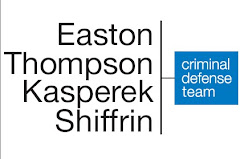In October of this year, two Monroe County legislators introduced a law purporting to protect police and first responders. The law was tabled, but then passed along party lines by the Republican majority in the county legislature. The bill was signed into law by the County Executive on December 2, 2019, despite protests from the community and concerns about its constitutionality as expressed by local attorneys, including those from this firm.
On December 4th, the Rochester Police Chief issued a memo indicating that Rochester Police Department members would not be arresting citizens pursuant to this law. Subsequently, the Monroe County Sheriff and other law enforcement agencies in Monroe County stated that they too would not arrest people pursuant to this law.
We have heard that these laws are being introduced around the state, and perhaps the country. We are including links to the letter sent by the attorneys, as well as a letter sent by the National Press Photographers Association, addressing the legal issues presented by the law that was passed here.




